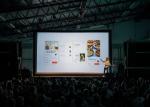Bio-available nitrogen is a major limiting factor to all living organisms. The origination of food for all living organisms is primary producers, which are dependent mostly on forms of bio-available nitrogen like nitrate and ammonia. While the most famous primary producers, plants, can make their own carbon “food” through photosynthesis, they cannot supply their own nitrogen “food”. This is due to high oxygen sensitivity of nitrogenase, the enzyme responsible for nitrogen fixation. Photosynthesis and nitrogen fixation are like water and oil, they don’t mix (but maybe they do…). There is a less famous primary producer that can fix both carbon and nitrogen called Cyanobacteria, which I will get back to shortly.
To avoid nitrogen-limitation, some plants such as soy beans can exchange carbon “food”, for nitrogen “food” with symbiotic bacteria. The plant provides a low-oxygen zone in the roots called a nodule to protect the oxygen-sensitive enzyme. However, many important plants, like wheat and corn, cannot form this symbiosis to obtain nitrogen “food” from bacteria. These are plants that we need to supply with copious amounts of nitrogen fertilizer so they can reach their yield potential in agriculture. To make this fertilizer, we are dependent on the energy intensive Haber-Bosch process which uses 5% of global annual natural gas and 5% of global annual energy. Nitrogen fertilizer also has other implications for ecosystem health such as eutrophication due to fertilizer run-off or a natural lack of nitrogen limiting the productivity of an ecosystem. This is basically an issue of having the right amount of bio-available nitrogen in the right place at the right time.
My research specifically looks at nitrogen fixation in Cyanobacteria, mainly Cyanothece sp. ATCC 51142, and aims to elucidate the mechanisms of oxygen-tolerant nitrogen fixation. Some strains of cyanobacteria are better than others at fixing nitrogen, and some strains fix nitrogen-differently depending on the conditions they grow in. Cyanothece sp. ATCC 51142 is a particularly robust single cell nitrogen fixer, making it a good model. Ideally, this research and the research of others working on similar projects will eventually result in more sustainable production of bio-available fertilizer by reducing or replacing the need for the Haber-Bosch process. If you want to learn more about the technical details of this project please check out my publications or send me an email.


